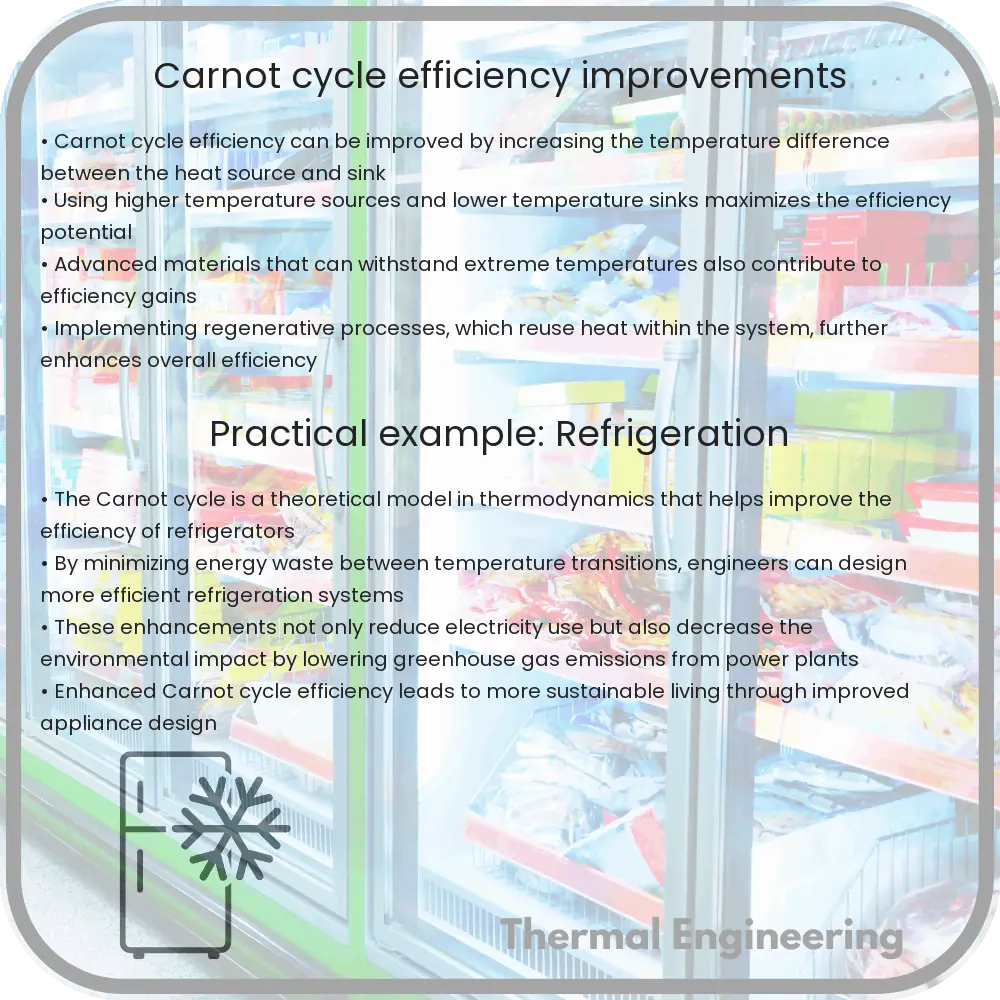Learn about the Carnot cycle, a theoretical model that sets the efficiency benchmark for heat engines in thermodynamics.

Understanding and Improving the Efficiency of the Carnot Cycle
The Carnot cycle is a theoretical model that describes the maximum possible efficiency that a heat engine can achieve under certain conditions. This model is fundamental in the field of thermodynamics and helps engineers understand the upper limits of engine efficiency. However, actual machines rarely achieve the Carnot efficiency due to real-world constraints. Nevertheless, there are strategies that can be employed to approach this theoretical efficiency more closely.
Basics of the Carnot Cycle
The Carnot cycle involves four key processes – two isothermal (constant temperature) and two adiabatic (no heat transfer) processes. The four stages are:
- Isothermal Expansion: The working fluid (like gas) is thermally connected to a high-temperature heat reservoir, expanding and doing work on the surroundings while absorbing heat.
- Adiabatic Expansion: The system is insulated, and the fluid continues to expand, doing work without exchanging heat, which causes it to cool down.
- Isothermal Compression: The fluid is now in contact with a lower temperature reservoir. It is compressed, thus giving up heat to the reservoir.
- Adiabatic Compression: The system is again insulated; the fluid is compressed further, which causes its temperature to rise back to the initial state, completing the cycle.
The efficiency of the Carnot cycle, denoted as η (eta), is calculated through the ratio of work done by the engine to the heat absorbed from the high-temperature reservoir. Mathematically, it is expressed as:
η = 1 – (T2 / T1)
where T1 is the temperature of the hot reservoir and T2 is the temperature of the cold reservoir. Here, temperatures must be in Kelvin for accuracy.
Strategies for Improving Carnot Cycle Efficiency
To enhance the practical efficiency of heat engines operating close to the Carnot cycle, several strategies can be explored:
- Temperature Management: Increasing the temperature (T1) of the heat source and decreasing the temperature (T2) of the heat sink can significantly enhance efficiency, as per the Carnot formula.
- Minimizing Irreversible Losses: In real engines, aspects like friction, turbulence, and non-ideal gas behavior lead to irreversible losses. Reducing these can help approach the theoretical Carnot efficiency.
- Material Advances: Using materials that can withstand higher temperatures and that have better thermal properties can reduce losses due to heat transfer and component degradation.
- Improved Design: Enhancing the design of the engine, such as optimizing the shape and size of the cylinders or improving the insulation, can also help in achieving higher efficiencies.
Implementing these improvements in a heat engine not only brings it closer to the theoretical limits of the Carnot cycle but also makes it more practical and efficient for real-world applications.
Conclusion
The Carnot cycle represents an idealized scenario that serves as a benchmark for the efficiency of heat engines. While achieving this ideal in practical applications remains challenging, advances in engineering and technology continually push the boundaries closer to this theoretical maximum. Understanding the principles of the Carnot cycle helps in designing more efficient thermal systems, ultimately contributing to better energy management and conservation in various industrial applications.